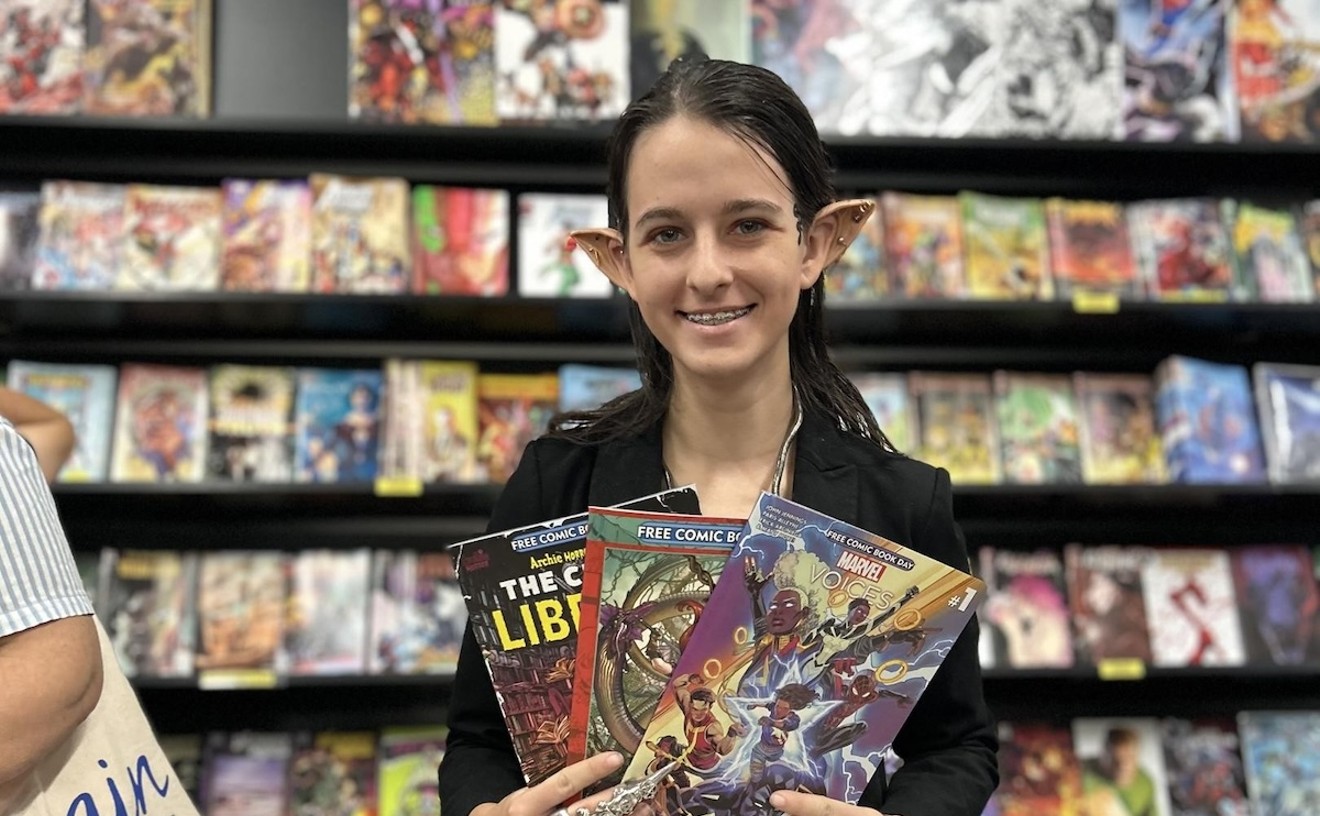For dancer/choreographer Marissa Alma Nick, her two grandmothers – Abuela Maria Gran Nick and Grandma Jean Teemer McCracken – were once vital, dynamic figures. As the two approached their final days, they remained physically accessible to their families, but each in her own way suffered the ravages of dementia.
To honor these women and come to terms with their deaths, Nick created two dance pieces in one program, Flowers for Spring, that movingly yet unmercifully explore the inexorable decline of minds and bodies. These distinctive, challenging works have evolved during the past several years (when both grandmothers were still alive) and even during recent weeks of rehearsal. Both will be presented in their stark beauty at the Miami-Dade Auditorium tonight, Thursday, and tomorrow, Friday.
The stage will be covered with thousands of yellow flower petals, but the performances will not be sugar-coated. "Abuela" is a solo dance and intermingles Abuela Maria's romantic recollections with painful, lucid confrontation of her delirium. Originally staged in Pablo Cano’s Red Velvet Theater in Little Havana, the piece uses Cano’s dashing puppet, Diego, as Maria's imaginary dance partner, and a red rose serves as both a token of love and focus of nervous energy. Singer Jahzel Dotel provides vocal
Contrasting the solo, the second piece, "Daydreaming With Jean," embodies Nick's divided persona among three dancers: Juliana Triviño, Sasha Caicedo, and Camille Arroyo. Sarah Amores is their understudy and has her own performance during intermission.
All are lithe, flexible, and strong. One challenge is for audiences to recognize within these youthful dancers the aged, arthritic, and traumatized old woman whose life has been shattered by the ravages of dementia and eventually by a fall and fracture.
Each dancer brings her own physicality and emotional states, teased out and refined by their teacher, choreographer, and "mama" during hundreds of rehearsals. In one section, where all three are on the floor, Nick coaches, “There’s something in the crawl that I want to get out of each of the three of you – to find like a very specific emotion that each of you
The grandmothers’ unraveling is explored in chapters, representing chronological, physical, and mental states that Nick has painstakingly choreographed as a dance theater production. Besides pure movement and posture, the drama unfolds with facial and gestural interaction – both among the performers and
Chicagoan Hope Littwin has composed original music that alternately propels, buoys, and threatens to overwhelm the dancers. To push her charges without hurting them was a challenge. “That’s part of the performative aspect of this,” Nick says, “actually seeing the body break down and get weary.”
Technical consultant Gary Lund, himself a veteran dancer, has brought clarity and emotional affinity to the production. His questions, commentaries, and dozens of pages of handwritten notes
Modeling the
Nick vividly recalls the vicissitudes of her grandmothers, as they would lose eye contact with visitors. “They’ve entered this dreamlike state, and so they’re remembering themselves younger for a moment. Cleansing themselves of what’s around them, what’s hurting them, what pains them – into feeling that [youth] for just a moment.”
In this dramatic presentation, she goes all-out to honor and come to terms with the loss of beloved family members, while dispelling any illusions about our physical destiny. Equally important, she and her dancers generate deep empathy.
— George Fishman, artburstmiami.com
Flowers for Spring
Includes "Abuela" and "Daydreaming With Jean." Thursday and Friday; bar and reception at 7:30 p.m., performance at 8:30 p.m., at Miami-Dade County Auditorium, the Black Box Theater, 2901 W. Flagler St., Miami; Tickets cost $30. Call 305-547-5414 or visit almadancetheater.com.










